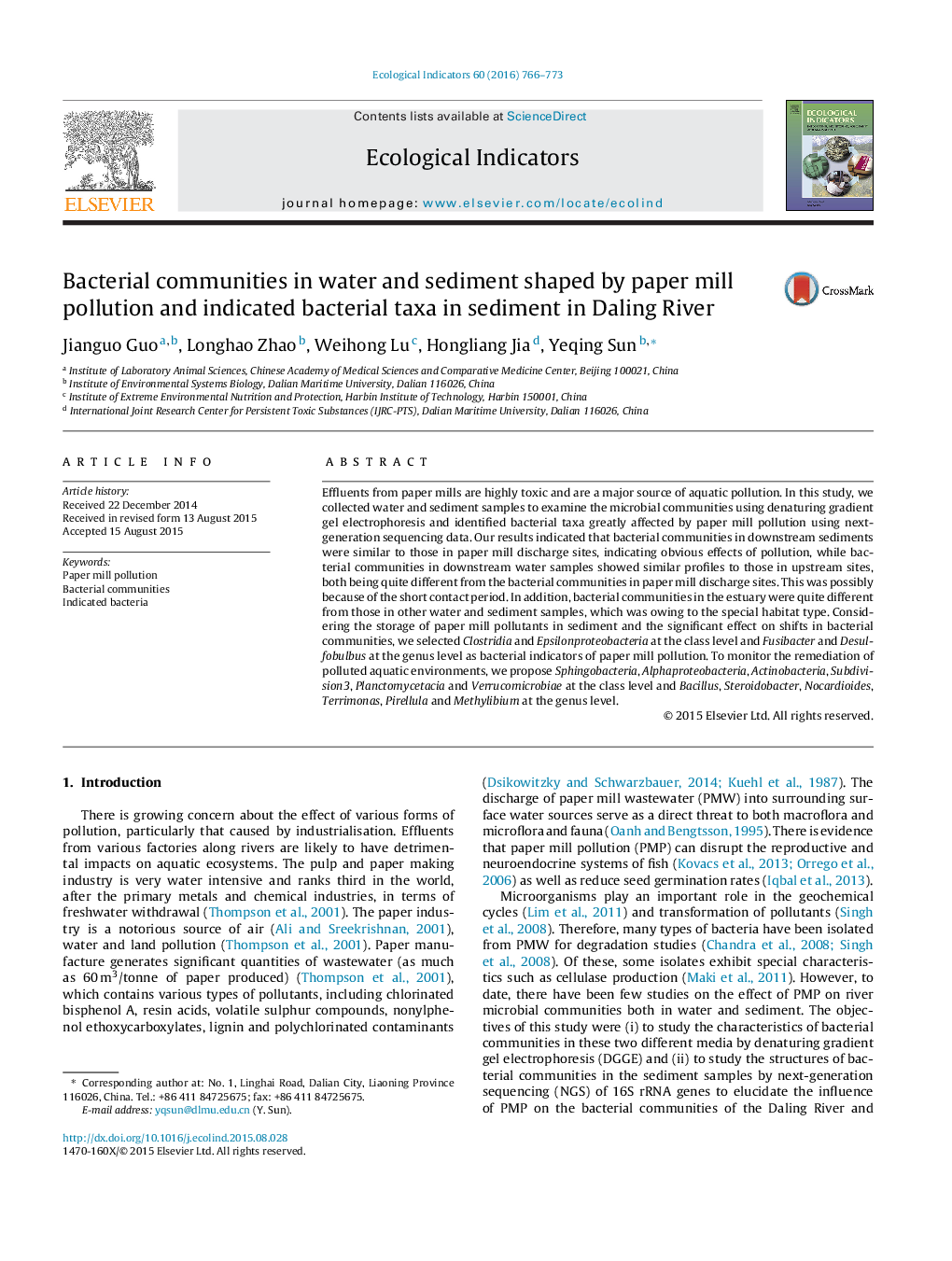| Article ID | Journal | Published Year | Pages | File Type |
|---|---|---|---|---|
| 6294153 | Ecological Indicators | 2016 | 8 Pages |
Abstract
Effluents from paper mills are highly toxic and are a major source of aquatic pollution. In this study, we collected water and sediment samples to examine the microbial communities using denaturing gradient gel electrophoresis and identified bacterial taxa greatly affected by paper mill pollution using next-generation sequencing data. Our results indicated that bacterial communities in downstream sediments were similar to those in paper mill discharge sites, indicating obvious effects of pollution, while bacterial communities in downstream water samples showed similar profiles to those in upstream sites, both being quite different from the bacterial communities in paper mill discharge sites. This was possibly because of the short contact period. In addition, bacterial communities in the estuary were quite different from those in other water and sediment samples, which was owing to the special habitat type. Considering the storage of paper mill pollutants in sediment and the significant effect on shifts in bacterial communities, we selected Clostridia and Epsilonproteobacteria at the class level and Fusibacter and Desulfobulbus at the genus level as bacterial indicators of paper mill pollution. To monitor the remediation of polluted aquatic environments, we propose Sphingobacteria, Alphaproteobacteria, Actinobacteria, Subdivision3, Planctomycetacia and Verrucomicrobiae at the class level and Bacillus, Steroidobacter, Nocardioides, Terrimonas, Pirellula and Methylibium at the genus level.
Keywords
Related Topics
Life Sciences
Agricultural and Biological Sciences
Ecology, Evolution, Behavior and Systematics
Authors
Jianguo Guo, Longhao Zhao, Weihong Lu, Hongliang Jia, Yeqing Sun,
